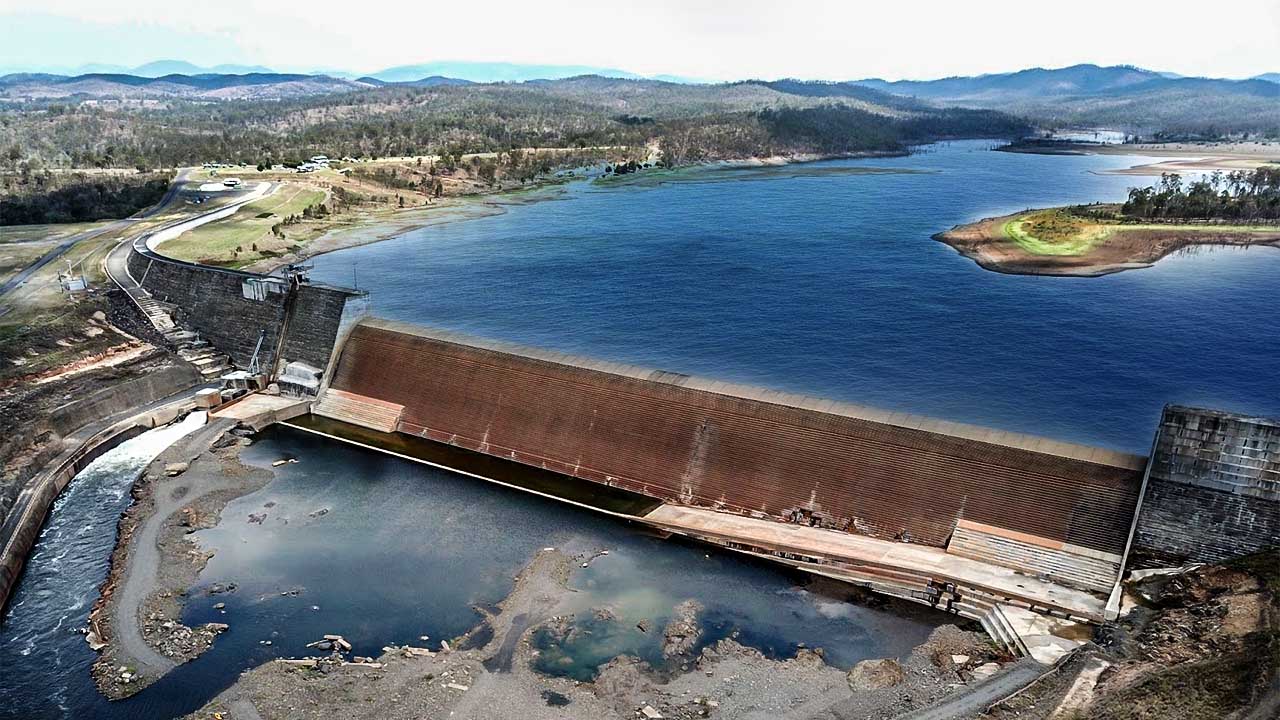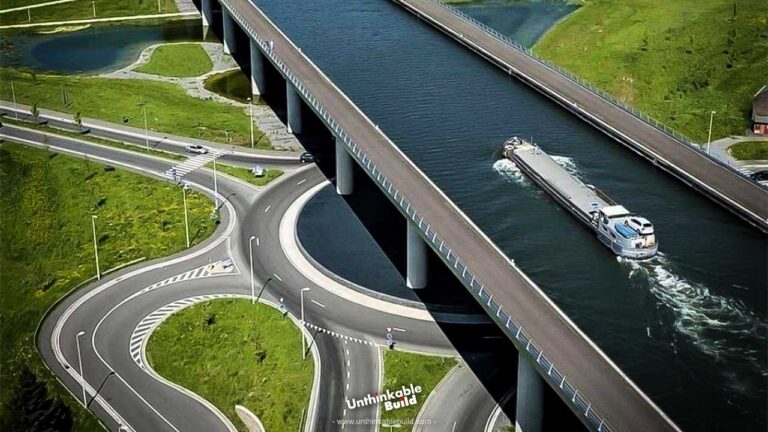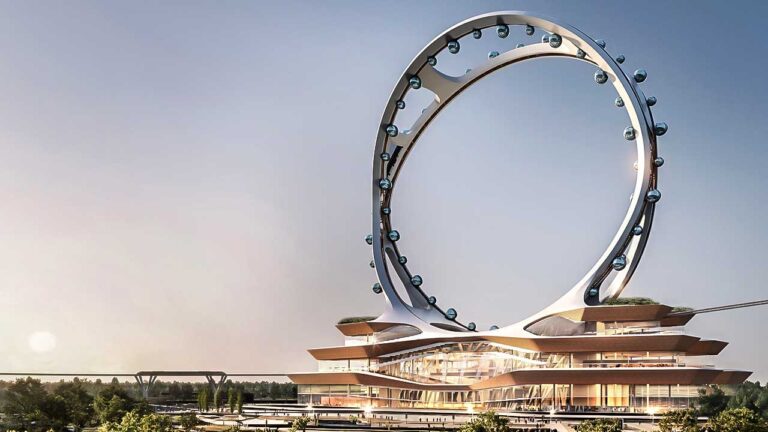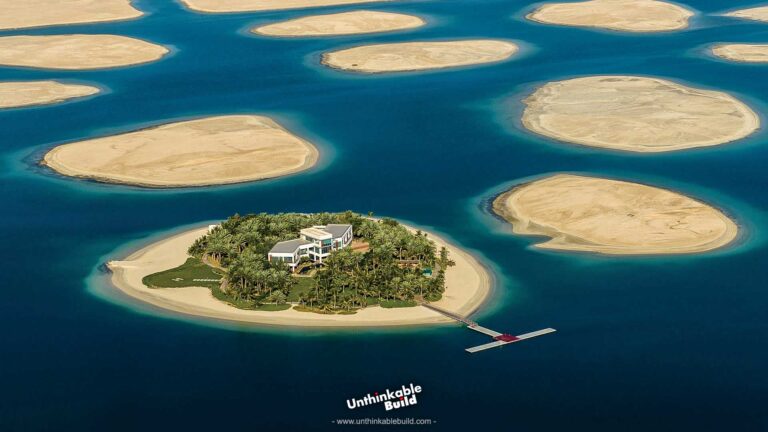The Struggle to Restore Australia’s Paradise Dam
Australia has about 500 large dams, and 100 of them are in Queensland, the second-largest state. These dams are essential for providing water and energy, but if one fails, the consequences can be disastrous. We’ve seen the severe impact of dam failures in a few countries, causing immense harm to communities and the environment.
The Paradise Dam built in 2005 on Queensland’s Burnett River, is facing a critical situation. Its main wall has been declared beyond repair due to severe structural issues. This dam, which has the total capacity to hold about 300 giga-liters of water, was originally built to provide a steady water supply for local farmers, industries, and urban communities.
But experts are worried that the dam might collapse. In response, the Australian government has promised to build a new dam downstream to prevent any future disasters. Sunwater in Queensland has already started making plans for this project.
Built 19 years ago for around $160 million, Paradise Dam, also known as Burnett River Dam, is the first ever roller-compacted concrete gravity dam in the country that has a fascinating backstory tied to the submerged ghost town of Paradise. Back in 1889, the town sprang to life when brothers James and Thomas Allen struck gold, drawing hundreds of settlers to the area.
In 2003, the construction on the Paradise Dam began, to ensure a stable water supply for irrigation. As the dam took shape, it created Lake Paradise, covering the historic town under its waters. The Paradise Dam rises 37.1 meters tall and stretches across 600 meters. Initially, experts believed it could serve the community’s needs for well over a century. However, devastating floods in 2013 inflicted substantial damage and downstream, approximately 60,000 residents faced potential risks.
In response, the Australian government allocated about $15 million to repair the dam’s main wall, ensuring its safety. Despite these efforts, ongoing concerns prompted a decision in 2020 to lower the main wall by 5.8 meters. This adjustment reduced the dam’s capacity to hold water to only 42% of its original intended capacity. This reduction puts the farmers at the mercy of country’s dry climate and sparked protests from the farmers.
Also Read: Rail Baltica: The European Megaproject Set to Replace Russian Railways
In 2023, work began to repair the wall of Paradise Dam, aiming to restore it to its original height and strengthen it with additional concrete. However, as experts examined the site, they discovered that the poor-quality concrete used in its initial construction was deteriorating and losing strength over time. They concluded that the wall couldn’t be effectively repaired or reinforced. Consequently, the repair project was abandoned, leaving the future of the dam in doubt.
Consequently, Australian government revealed detailed plans on January 11, 2024, to move Paradise Dam 70 meters downstream. During this process, the dam will maintain its current lower water level. Authorities have confirmed that the dam is stable and not at immediate risk of collapsing, projecting it to remain safe for many years to come. This initiative is aimed at improving the dam’s long-term safety and reliability, addressing ongoing concerns about its structural integrity.
Once the reconstruction is completed, the dam will restore its water storage capacity to 300,000 mega-liters. This increase will ensure more reliable water access for agriculture, industry, and communities throughout the area, greatly improving water security.
A respected water engineer, closely involved in monitoring the situation, emphasized the challenges and costs associated with abandoning and rebuilding the dam. Most importantly, the new dam wall will be built to meet strict safety standards, ensuring it serves the Bundaberg region reliably for at least 100 years. This long-term investment is aimed at securing jobs and fostering growth that will benefit our community for generations to come.
Sunwater has initiated the development of the business case for the new dam wall and is currently pursuing the required environmental approvals. Upon completing these phases, they anticipate having a more defined timeline and cost estimate for the project. However, finalizing designs and securing environmental approvals could span at least two years.
The reconstruction of Paradise Dam is expected to bring significant changes to the local communities in Queensland’s Wide Bay-Burnett region. During the reconstruction phase, approximately 250 new jobs are anticipated to be created, providing valuable employment opportunities for local residents and giving a boost to the regional economy.
The Australian government has asked Sunwater to create a detailed plan for expanding the irrigation network. This expansion is crucial for the future growth of the Bundaberg Water Supply Scheme and will address the current challenges in accessing water from the dam. This move follows a key recommendation from the draft Bundaberg Burnett Regional Water Assessment, which emphasized the need for improved water infrastructure to meet the increasing demand and support local agriculture. The proposed expansion aims to enhance water distribution efficiency, making it easier for local farmers and communities to access reliable water resources and thrive.
As community involvement is crucial, the input from local residents will be sought through consultations to guide decisions on the dam’s design, safety measures, and other important aspects.
Environmental considerations remain a top priority throughout the planning and construction phases. Thorough assessments and necessary approvals will be conducted to balance the region’s water needs with protecting its natural environment and wildlife.
Additionally, the dam and its surroundings are popular destinations for tourists and outdoor enthusiasts. With improved facilities, there is potential to enhance recreational activities like fishing, boating, and picnicking, further promoting tourism and allowing tourists to enjoy the region’s beautiful natural surroundings.
Also Read: North East Link – Australia’s Mega Transport Project
While the reconstruction of Paradise Dam aims to boost water security, it’s crucial to consider the ecological impact. Wildlife may face disruptions during the construction phase, but improved water management could benefit ecosystems in the long run, striking a balance between human needs and environmental conservation.
The impact of Paradise Dam on local wildlife is multifaceted. The construction has significantly changed the natural landscape. Rivers that once flowed freely are now impounded, affecting aquatic ecosystems. Sensitive species like certain fish and mussels may struggle to adapt to the changes in water flow and oxygen levels, putting their survival at risk. To support fish migration, fish ladders or lifts will be installed, allowing fish to bypass the dam. Additionally, enhancing fish habitats downstream will help compensate for the loss of natural spawning grounds, ensuring the aquatic life can continue to flourish.
Engaging with the community is essential. Involving local residents, Indigenous groups, and other stakeholders in decision-making will ensure that everyone’s concerns are addressed and traditional knowledge is incorporated into the plans.
Preparing for emergencies is a must. Developing response plans for potential dam failures, including evacuation routes, communication systems, and early warning systems, will help protect lives and property in the event of an incident.
Sunwater has conducted a “palaeoflood” study to understand the Burnett River’s flood history. This study combines scientific data with local Indigenous knowledge, helping to plan dam infrastructure and manage floods during emergencies. The integration of traditional and modern knowledge is vital for effective water management.
Water is a precious gift from nature, and the increasing global temperatures have underscored its significance even more. The Paradise Dam reconstruction project aims to significantly reduce local farmers’ dependence on rainfall and serve as a robust defense against potential future floods.







